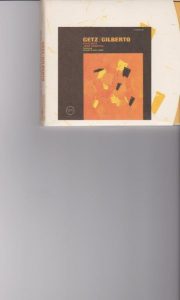Astrud Gilberto was a Brazillian housewife, but veteran sax player Stan Getz suggested she sing some English lyrics on the Getz/Gilberto jazz album, which became one of the most popular jazz albums of all time along with Dave Brubeck’s Time Out.
“The Girl from Ipanema”, a name based on a real teen who used to frequent a Brazillian beach area, became a gigantic 45 rpm hit world-wide. The song itself was carefully excerpted from the original album cut which, ironically, featured her husband-guitarist-vocalist as the featured singer on the song. Despite his protestations and those of the composer, the famous pianist Antonio Carlos Jobim, Getz prevailed with his record company Verve, and the rest was pop recording history.
Getz’s call was bang-on and the housewife became an instant star and sensation with the crown jewel hit of the brief pop wave of Bossa Nova. This, incidentally, remains Getz’s most famous recording BTW and his playing is beautifully simple, lyrical, soft, sweet, and very sexy. (He stopped playing it, though, in his later years.) The album is also the most famous Bossa Nova album of all time and one of the top-selling jazz albums of all time too.
I first heard it in grade 9 as the Beatles launched their charge on North America. It blew me away for a host of reasons:
-the songs of Jobim are beautiful, wistful, sensuous and very romantic (this is easily the most sensuous, seductive jazz album of all time)
-the voice of Joao Gilberto is wistful, delicate, and very poignant; he sings in Portugese; incidentally, his voice is the first you hear on track #1, not Astrud’s
-the accompaniment is very subdued as played by the bassist, drummer, and Jobim’s solos are tender single-note noodling at its best
-this is an album of high romanticism, perhaps the best love soundtrack of all time with a strong emphasis on feeling and lyricism
If you have never heard this album, you’re in for a treat. You won’t be disappointed; the music and sound are awesomely sublime, beautiful, ‘to die for’.

